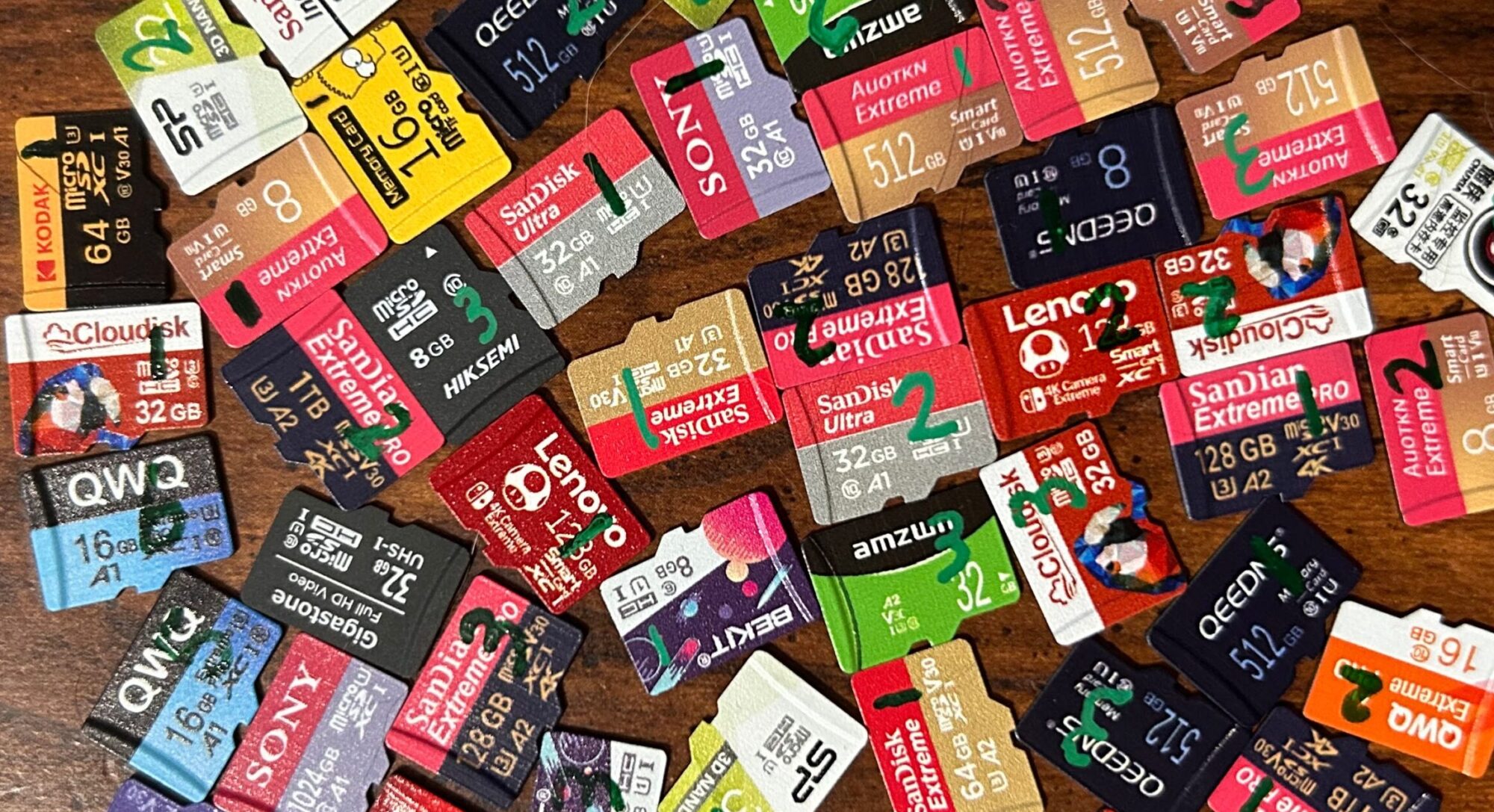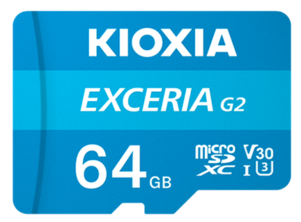Kioxia is a major brand that has its roots in Toshiba: they were originally the flash memory division of Toshiba, and were actually credited with having invented flash media.
It should be noted that I ordered the 32GB version of this card, not the 64GB version. The 64GB version is what showed up. The price shown above is the price I paid for the 32GB version. (I don’t know if the seller simply made a mistake or if they were out of the 32GB version and sent me the 64GB as a replacement — but whatever. Free upgrade!)
Performance-wise, these cards actually did rather well — all performance measurements were above average. The measurements weren’t as tightly grouped as I usually like to see, but they were still good nonetheless:
- Sequential read: Sample #1 got a sequential read score that was a little slower than the other two, putting it in the 50th percentile (as of the time of this writing). The other two samples got scores in the 72nd and 85th percentiles.
- Sequential write: Sample #3 got a sequential write score that was a little faster than the other two, putting it in the 94th percentile. The other two samples got scores in the 84th and 86th percentiles.
- Random read: Sample #1 got a random read score that was a little faster than the other two, putting it in the 98th percentile. The other two samples got scores in the 72nd and 75th percentiles.
- Random write: Sample #1 got a random write score that was a little faster than the other two, putting it in the 88th percentile. The other two samples got scores in the 78th and 82nd percentiles.
These cards carry the U3 and V30 marks. The package also has the Class 10 and A1 marks, but these marks do not appear on the cards themselves. All performance measurements were good enough for this card to qualify for all of these marks.
On the endurance testing front:
- Sample #1’s first error was during round 5,110. (I’m not sure of the exact nature of this error — as it doesn’t seem to be a bit flip error, and I hadn’t yet implemented code to detect other types of errors). It has survived 11,258 read/write cycles overall so far.
- Sample #2’s first error was a data mismatch error, affecting 8 sectors, during round 896. (This error also occurred before I had implemented code to characterize the type of error that occurred, so I don’t know of the exact nature of this error.) It has survived 11,944 read/write cycles so far.
- Sample #3 has survived 11,162 read/write cycles so far and has not yet experienced any errors.
June 16, 2025 (current number of read/write cycles is updated automatically every hour)

